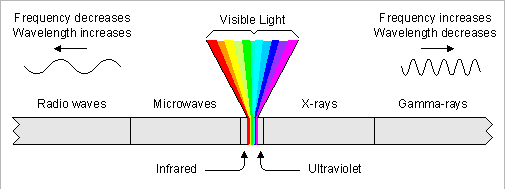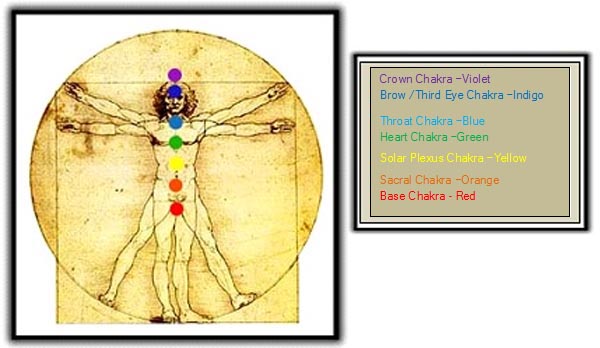History of Colour
The sun has always been worshipped with all humanity knowing that without light, there would be no life. Papyrus scrolls dating back to 1550BC and ancient texts, show that Colour Therapy healing has foundations as far back as the ancient civilisations in Egypt, India, China and even the lost Atlantis. They all constructed a mixture of special temples or chambers that were used to heal illnesses and disease with natural light, specific coloured rooms and crystals, some of which combined colour with Mandalas, chanting and meditation.
Throughout the middle ages, treatment of disease or imbalance of the body was led by the Doctrine of Humours. The Humours were represented by bodily fluids and astrological elements but also related to a particular colour and temperature. A Persian physician, Avicenna, wrote about the use of specific colours and their attributes to cure the imbalances within the humours of the body and accordingly prescribed coloured ointments, bandages and flowers in his treatments of disease. His methods of work were inspired by great philosophers and physicians such as Aristotle, Pythagoras and Hippocrates, who all documented theories of light and colour that are used in modern day. These were such things as the discovery of new colours when mixing two colours together and how light travels in waves. One of the best known physicians was Paracelsus, who used such things as colour, music and herbs in his remarkable treatments and complementary healing, most of which are again used in modern day.
The scientific founder of the coloured spectrum, its wavelength and vibrational frequencies, was Sir Isaac Newton. He experimented with passing sunlight through a prism and discovered that the light became refracted into the seven colours of the spectrum. He also found that a certain colour had a different angle of refraction and that by turning a prism upside down, all the colours of the spectrum would form white light again.
Hindu scientist, D.P. Ghadiali, formulated the principles behind the human body's organs having an adverse, stimulated or inhibited response, to the exposure of certain colours. He concluded that if a part of the body was not functioning properly, a specific treatment of colour could restore balance.
 In more recent times, Edward Babbitt published a book called "The Principles of Light and Colour" where he described the healing effects of each of the seven colours of the spectrum and their attributes, which, in today's society, we associate with e.g. red stimulates the blood and blue calms it. He also invented devices such as the Chromalume, which involved the exposure of sunlight through coloured glass. This prototype and its methods are used today in the treatment of SAD (Seasonal Affective Disorder) or the use of coloured lamps.
In more recent times, Edward Babbitt published a book called "The Principles of Light and Colour" where he described the healing effects of each of the seven colours of the spectrum and their attributes, which, in today's society, we associate with e.g. red stimulates the blood and blue calms it. He also invented devices such as the Chromalume, which involved the exposure of sunlight through coloured glass. This prototype and its methods are used today in the treatment of SAD (Seasonal Affective Disorder) or the use of coloured lamps.
There are also the Steiner schools, which teach the methods of Rudolf Steiner, an Austrian philosopher, who uses spiritual teachings through colour and how it is reflected in every stage of human development.
Colour Therapy became more widely used during the 20th century and is now a recognised complementary treatment which combines ancient wisdom and modern research, in various techniques, to treat the person in a holistic manner, and in particular to treat the cause as well as the symptoms of an illness or disorder.
Throughout the middle ages, treatment of disease or imbalance of the body was led by the Doctrine of Humours. The Humours were represented by bodily fluids and astrological elements but also related to a particular colour and temperature. A Persian physician, Avicenna, wrote about the use of specific colours and their attributes to cure the imbalances within the humours of the body and accordingly prescribed coloured ointments, bandages and flowers in his treatments of disease. His methods of work were inspired by great philosophers and physicians such as Aristotle, Pythagoras and Hippocrates, who all documented theories of light and colour that are used in modern day. These were such things as the discovery of new colours when mixing two colours together and how light travels in waves. One of the best known physicians was Paracelsus, who used such things as colour, music and herbs in his remarkable treatments and complementary healing, most of which are again used in modern day.
The scientific founder of the coloured spectrum, its wavelength and vibrational frequencies, was Sir Isaac Newton. He experimented with passing sunlight through a prism and discovered that the light became refracted into the seven colours of the spectrum. He also found that a certain colour had a different angle of refraction and that by turning a prism upside down, all the colours of the spectrum would form white light again.
Hindu scientist, D.P. Ghadiali, formulated the principles behind the human body's organs having an adverse, stimulated or inhibited response, to the exposure of certain colours. He concluded that if a part of the body was not functioning properly, a specific treatment of colour could restore balance.
 In more recent times, Edward Babbitt published a book called "The Principles of Light and Colour" where he described the healing effects of each of the seven colours of the spectrum and their attributes, which, in today's society, we associate with e.g. red stimulates the blood and blue calms it. He also invented devices such as the Chromalume, which involved the exposure of sunlight through coloured glass. This prototype and its methods are used today in the treatment of SAD (Seasonal Affective Disorder) or the use of coloured lamps.
In more recent times, Edward Babbitt published a book called "The Principles of Light and Colour" where he described the healing effects of each of the seven colours of the spectrum and their attributes, which, in today's society, we associate with e.g. red stimulates the blood and blue calms it. He also invented devices such as the Chromalume, which involved the exposure of sunlight through coloured glass. This prototype and its methods are used today in the treatment of SAD (Seasonal Affective Disorder) or the use of coloured lamps.
There are also the Steiner schools, which teach the methods of Rudolf Steiner, an Austrian philosopher, who uses spiritual teachings through colour and how it is reflected in every stage of human development.
Colour Therapy became more widely used during the 20th century and is now a recognised complementary treatment which combines ancient wisdom and modern research, in various techniques, to treat the person in a holistic manner, and in particular to treat the cause as well as the symptoms of an illness or disorder.





